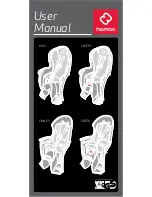
22
Shifting gears
Depending on the type, a dérailleur system consists of
the front and rear dérailleurs, the shift levers, and the
dérailleur control cables, all of which must function
correctly for smooth gear shifting to occur. There are
several different types of dérailleur systems but all
operate using similar principles.
Your new bicycle is fitted with ‘index’ system (e.g. SIS)
that links each different gear position to a positive
click mechanism in the shifter and makes shifting very
simple and precise.
This bicycle’s shift system has the following:
• right-hand shift lever
• a rear dérailleur
• rear chain rings
• a chain
A bicycle’s shifting system works as follows:
1. The rider moves the shift lever to an index position.
2. A clicking sound is heard when the shift control
moves into a position signaling the shift is com-
plete.
3. The shift control pulls a cable wire attached to the
rear dérailleur.
4. The rear dérailleur moves and guides the chain
from one sprocket to another.
The act of moving the chain from one chain ring to an-
other is called gear changing or shifting.
Basically, a downshift is a shift to a “lower” or “slower”
gear (easier to pedal), while an upshift is a shift to a
“higher” or “faster” gear (harder to pedal).
For easy recall, keep in mind that shifting the chain
towards
the centreline of the bicycle is for accelerating
or climbing, and is called a
downshift
. Moving the
chain
out
or
away
from the centreline is for speed, and
is called an
upshift
.
NOTE:
There is no “correct” gear to ride your bicycle.
The correct gear is the one that is comfortable to you.
How a dérailleur works















































